1 – Introduction
2 – Food
3 – Hotels
4 – Public Transportation
5 – Attractions of Venice
6 – Venice
7 – Genoa
8 – Milan
We knew that we arrived at Venice, when we saw the familiar architecture from Venetian the Las Vegas casino.
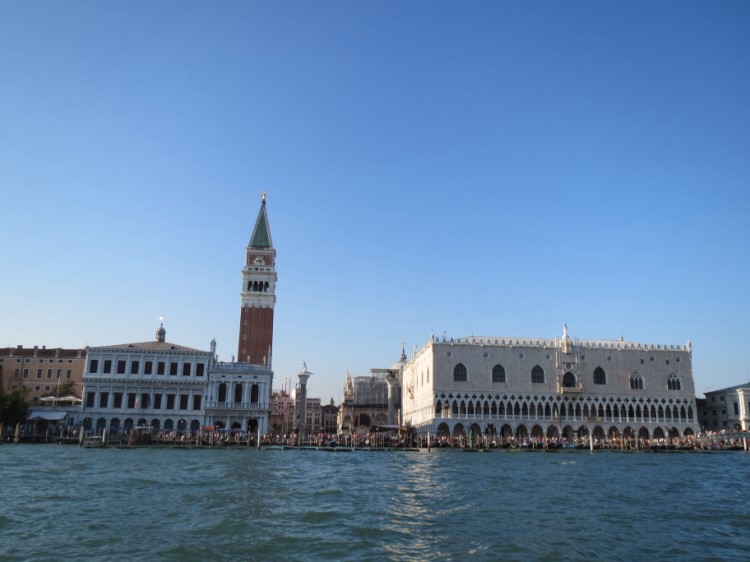
Approaching St. Mark’s Square on a vaporetto
St. Mark’s Square is the heart of Venice. The name came from St. Mark’s Basilica, which was built to house the relics of Mark the Evangelist that Venetian merchants stole from Alexandria 1,200 years ago. The Basilica houses some of Venice’s oldest and most prized treasures… that the Venetians looted from Constantinople 800 years ago, during the 4th Crusade. In essence, Venice was a pirates’ cove.
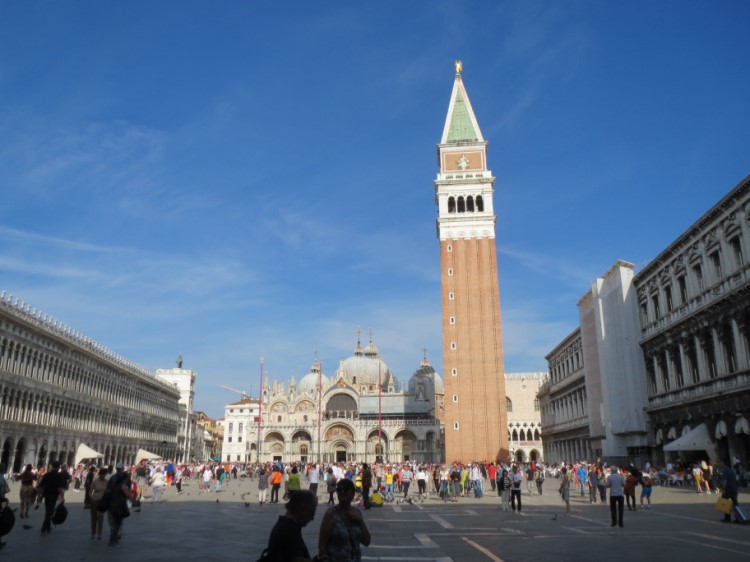
St. Mark’s Square, with the Basilica in the background
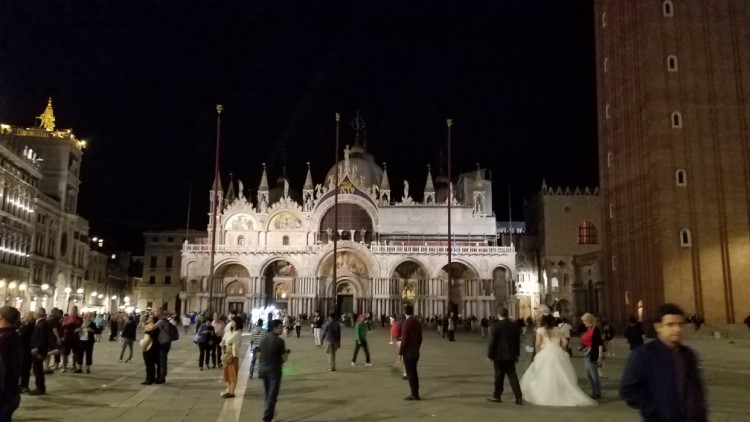
St. Mark’s Basilica at night
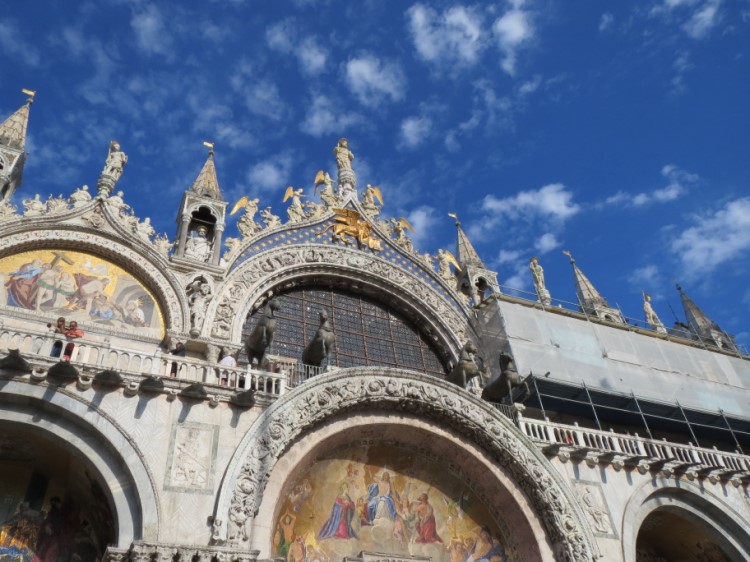
Bronze horse statues, looted from Constantinople
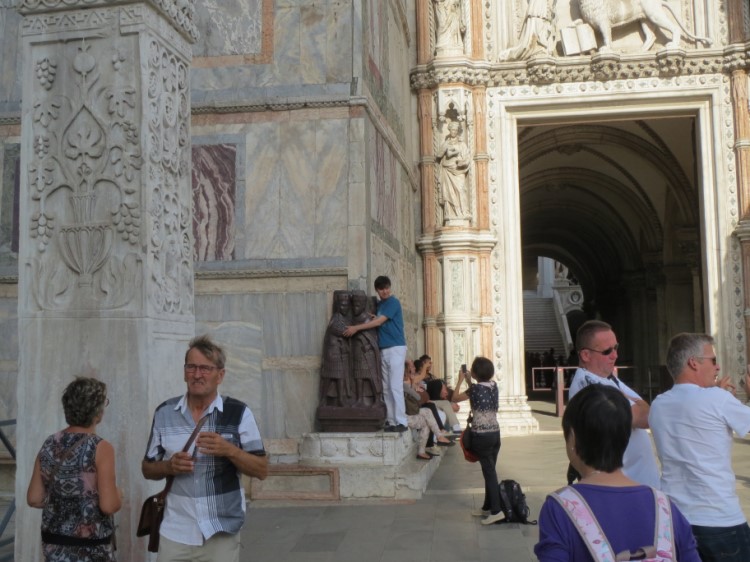
The Tetrarchs statue, also taken from Constantinople
I found it rather bizarre that such artwork from 800+ years ago was placed so casually in public, exposed to hazards like this tourist
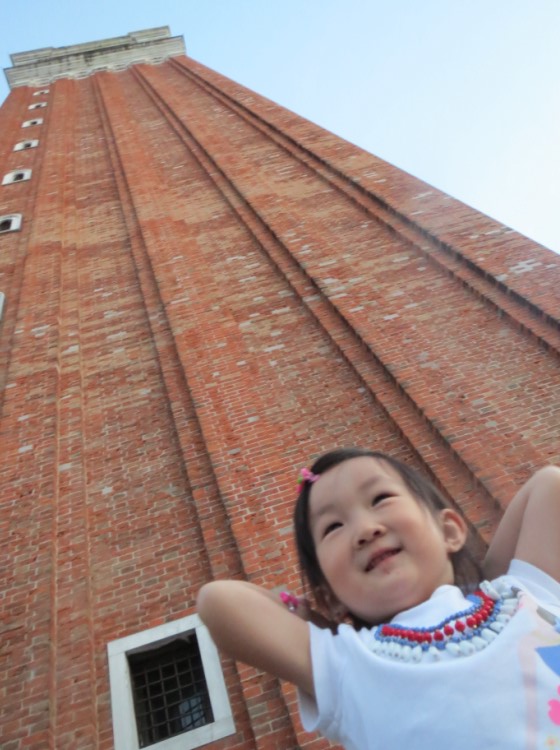
Xuan and the Campanile
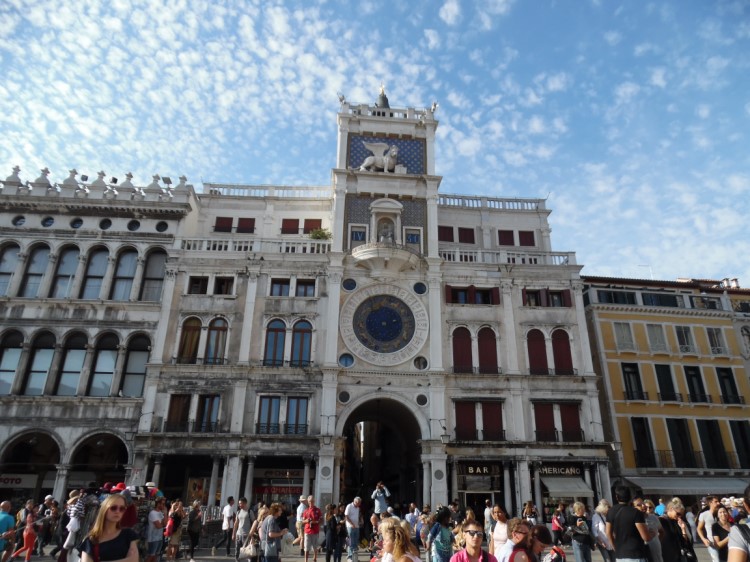
St. Mark’s Clock Tower
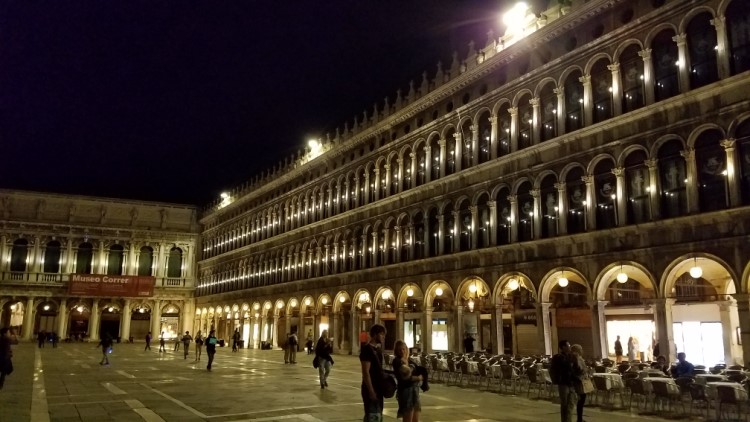
The Square at night, with outdoor restaurant seating and music performance
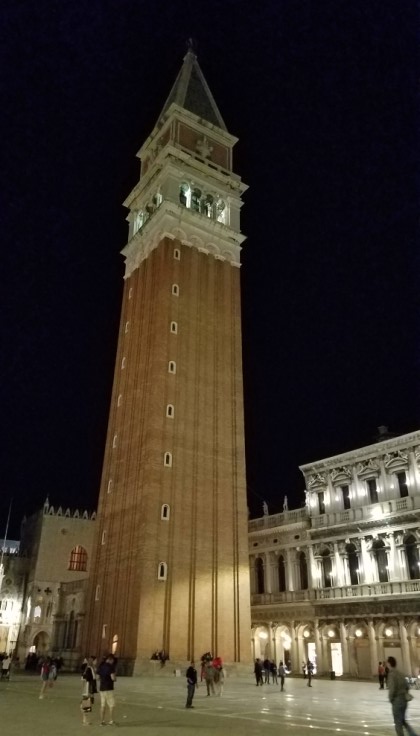
Campanile at night
A major attraction in Venice is Doge’s Palace. Unlike much of Europe that was historically governed by kings and lords, the Republic of Venice was ruled by an elected official called doge. Their main rival, Republic of Genoa, also adopted this form of government. Doge’s Palace has been at the current location for 1,200 years, although the current construction only dates back 700.
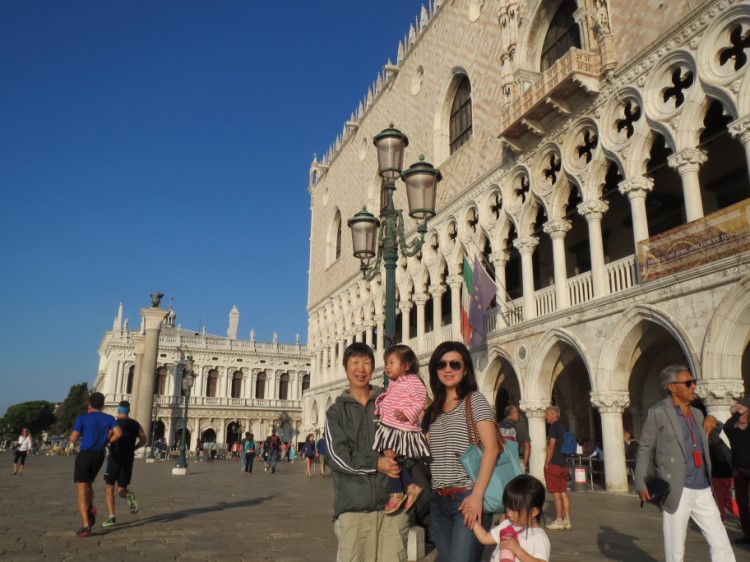
Doge’s Palace on the right (library in the back)
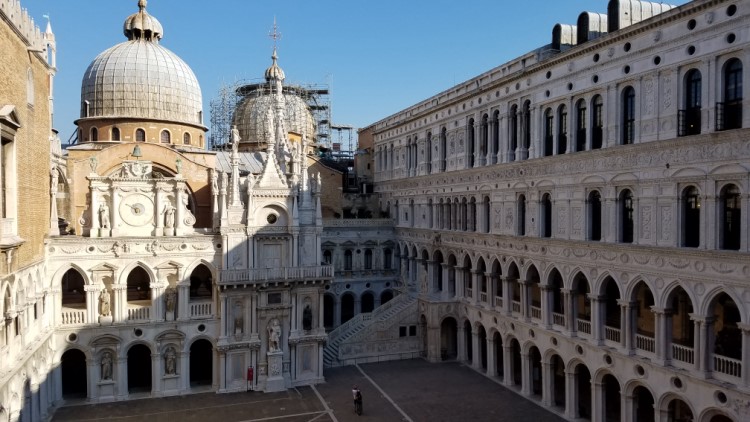
Courtyard
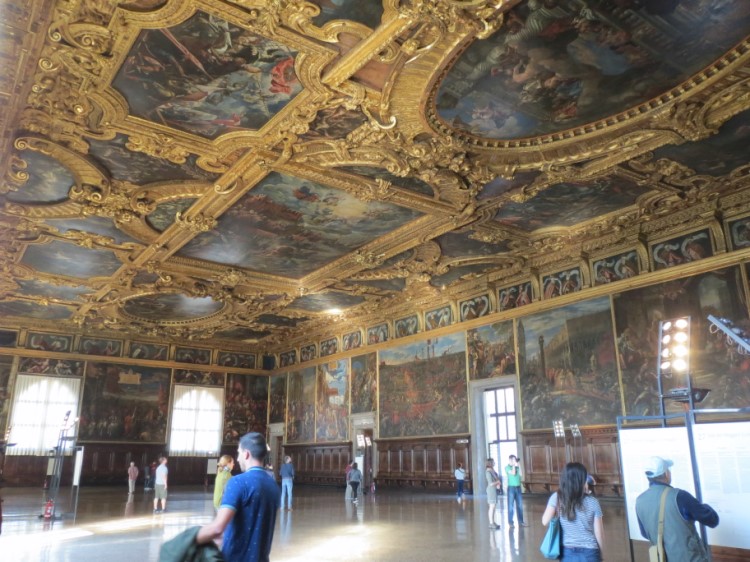
Lots of gold on the interior (the Venetians used to be quite rich)
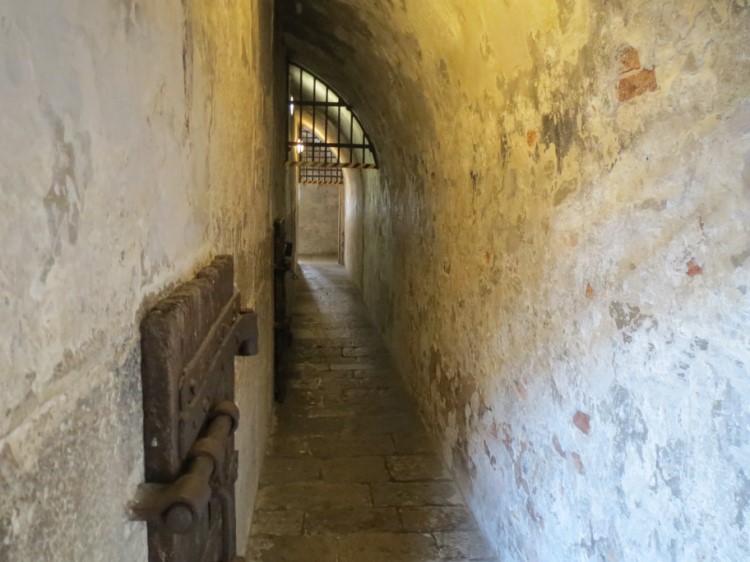
Inside the New Prison, on an adjacent island across the Bridge of Sighs
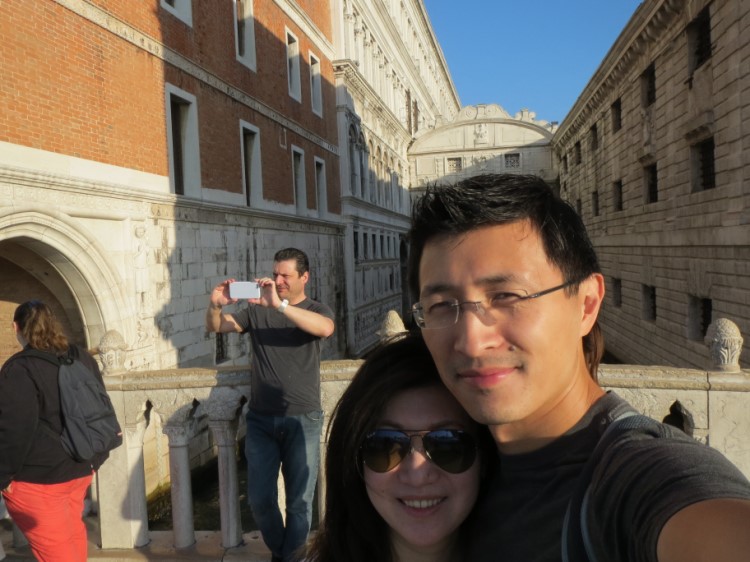
Selfie in front of the Bridge of Sighs
There’s a legend about eternal love involving kiss, gondola, sunset, and this bridge built to lock criminals away for life
Italians have a strange idea about romance…
IMO the two most recognized structures in Venice are the Campanile and the Rialto Bridge. The dude who built (part of) the current Doge’s Palace also designed this bridge, which at the time was an engineering marvel to cross such a wide canal. Today it remains an engineering marvel being able to sustain the weight of what must be 2 billion tourists and five hundred thousand souvenir shops, at all hours of the day.

Attempting to cross this bridge at mid-day was among the least pleasant memories from Venice
The entire city of Venice stretches 3 miles long, and just about everything touristy is confined to a 1 square mile area. Therefore, you can exhaust your options pretty quickly, and yearn to go somewhere else. Here’s where Murano come in – as the most interesting among the remote islands. Travel guides generally recommend a visit, but have little to say about it. Yes there is the famous Murano glass and a Glass Museum here, but to me the visit was mainly an opportunity to ride the boat on open waters.
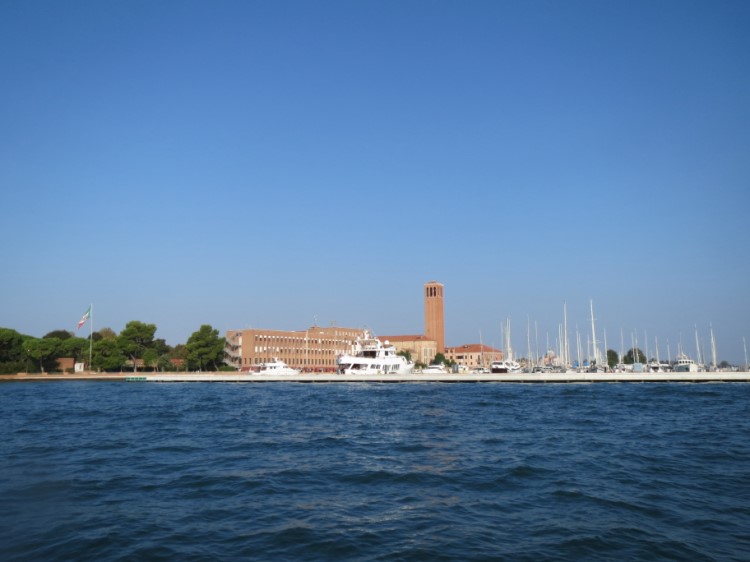
On the way to Murano, looking at fortifications at the eastern end of Venice
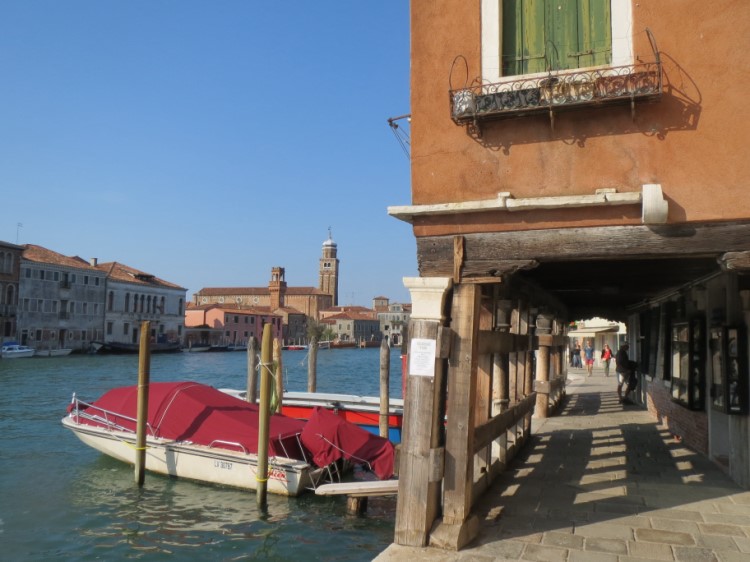
“Downtown” Murano
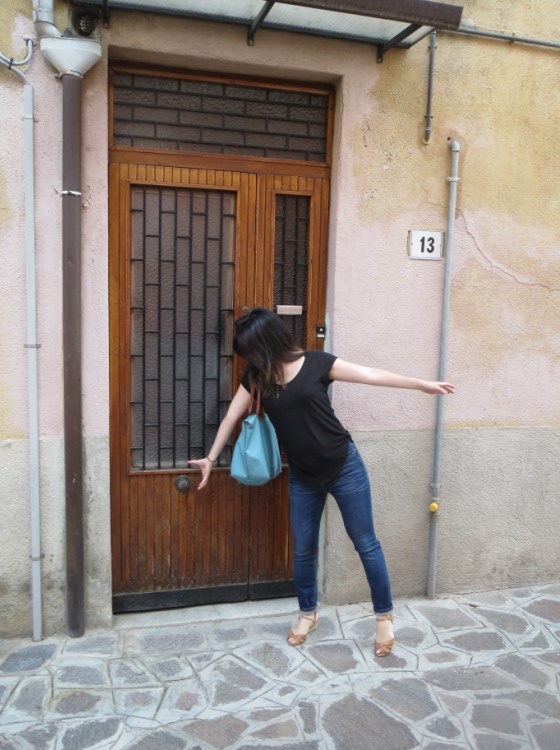
Hong found a door knob for hobbits
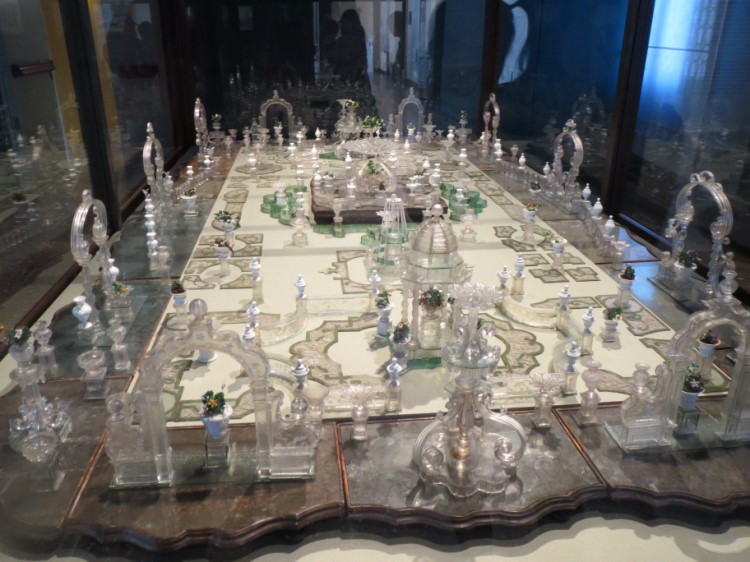
The most interesting display in the Glass Museum
This place, like the Frietmuseum in Bruges, is an attraction that you feel compelled to check out just for the symbolism, yet right upon entry regret not having saved the admission money for a hot dog or something
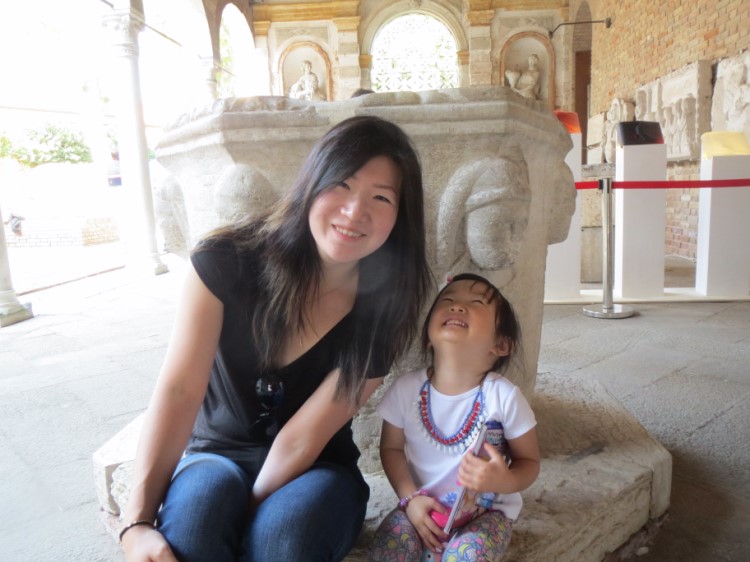
The happy faces immediately after exiting the Glass Museum
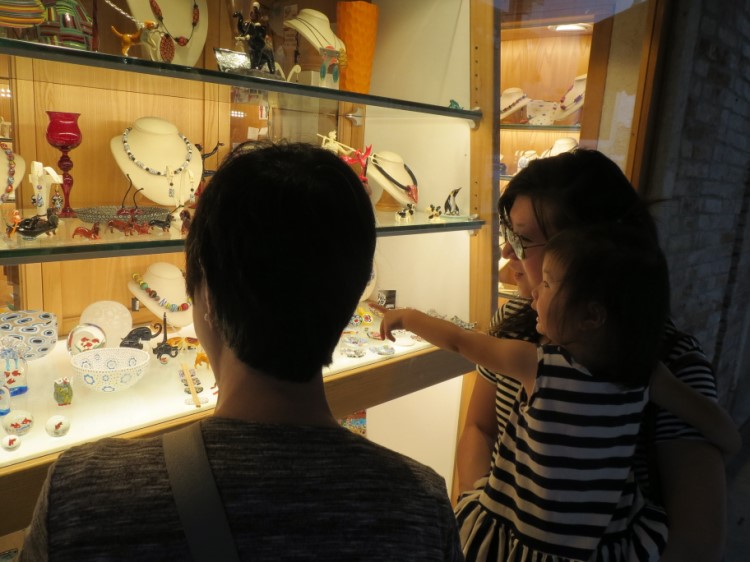
Shops selling “Murano Glass” artwork (note: made in China) had to be the most saturated business in Venice after restaurants and gelato shops
After Murano, we took a water bus to the other end of Venice and visited the Ghetto. That’s right, the Ghetto where the word ghetto was created. Europeans everywhere hated Jews and Venice was no exception. They instituted the segregation for nearly 300 years, confining the Jews to live in this corner of the city. Liberation finally came when that hugely influential guy in Italian history arrived. That’s right: Napoleon Bonaparte of France.
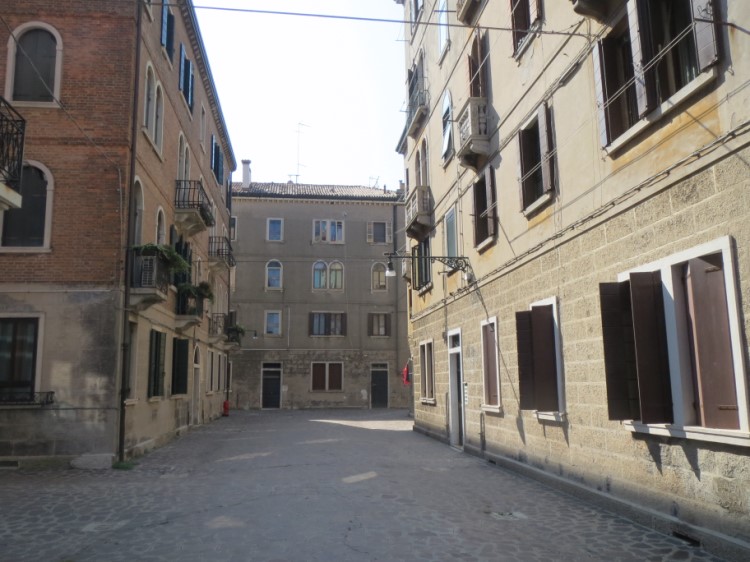
Architecture in the Ghetto was visibly different from the rest of Venice. The streets were also as wide as some squares
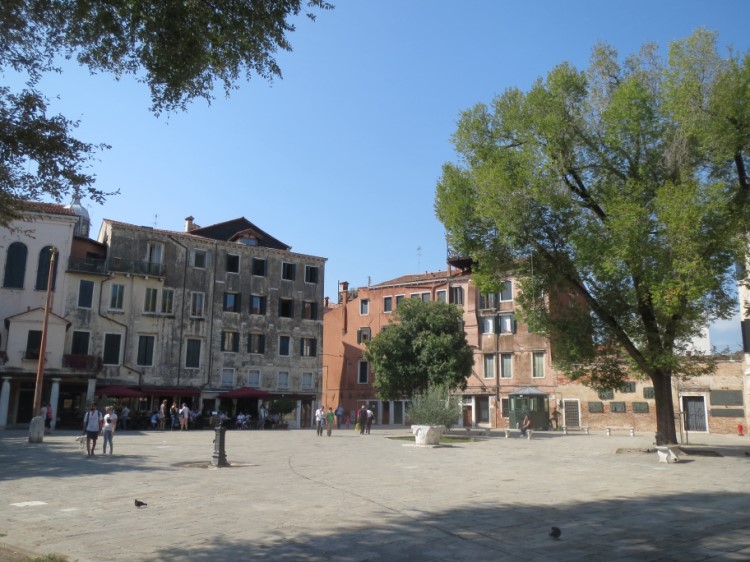
Ghetto Nuovo, the center of the Venetian Ghetto
Lastly, here’s a picture we took in front of Basilica di Santa Maria della Salute. Black Death killed 1/3 of the Venetian population in the 17th Century, and immediately afterwards the Republic built this church to protect its people’s health. We didn’t get a chance to go in, but the art in the church supposedly all referenced Black Death. Seems rather grim, yet cool, for a place of worship. But anyhow, this was one of the most gorgeous buildings in Italy.
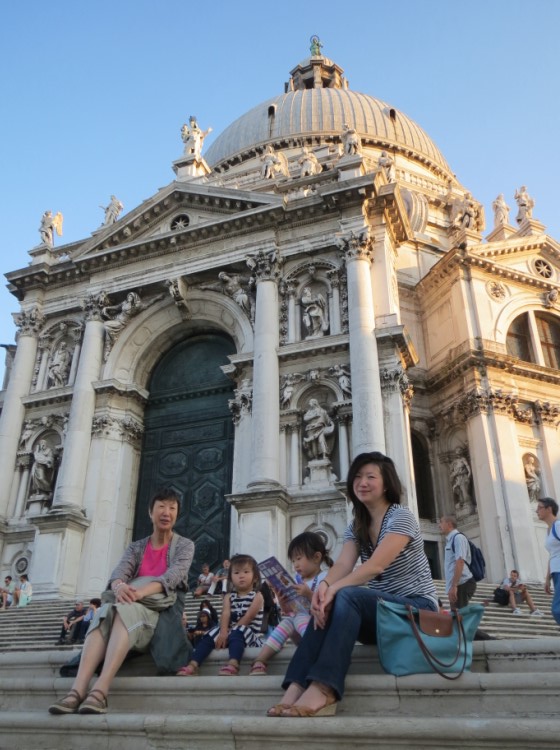
Just chilling and waiting for the healthy blessings to soak in!
No Comments